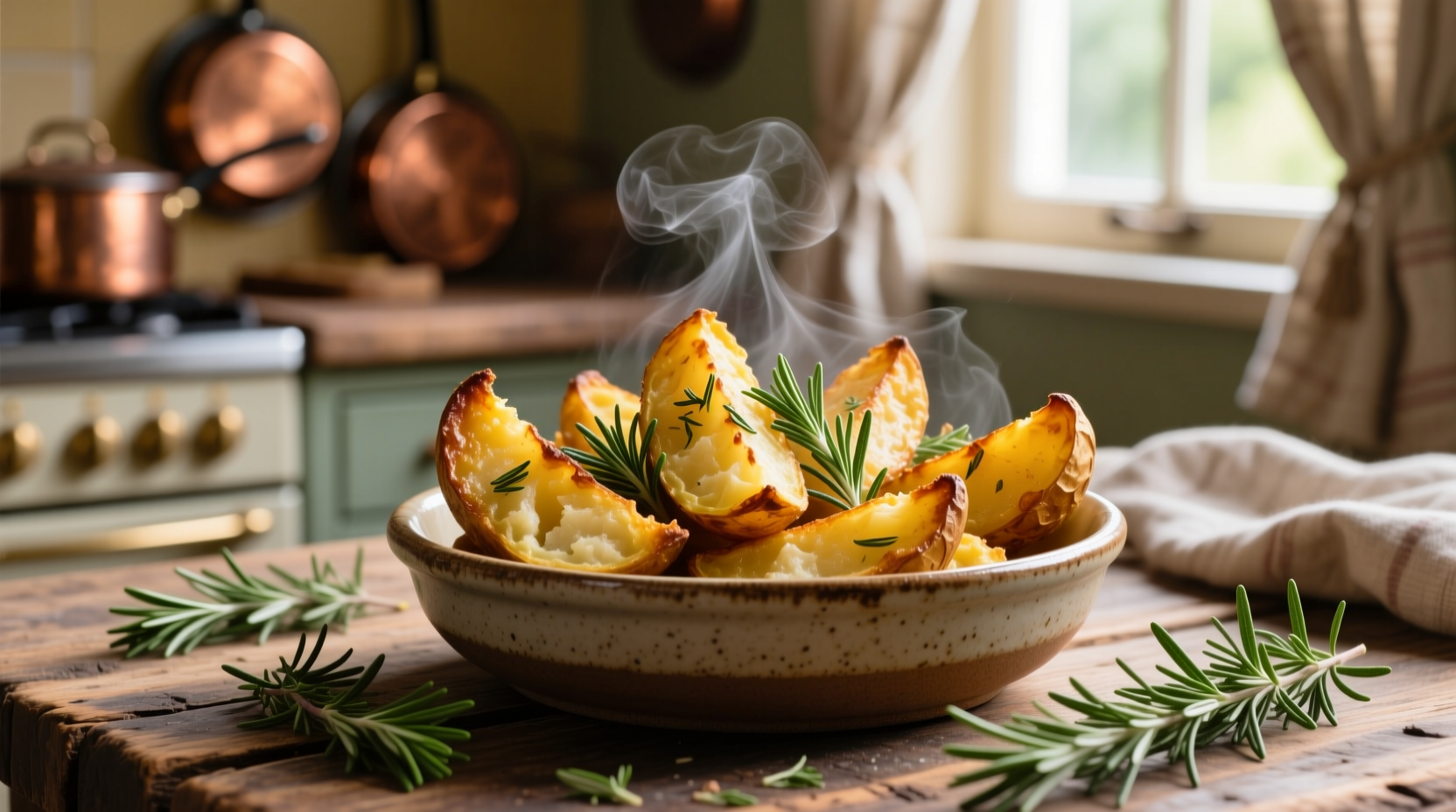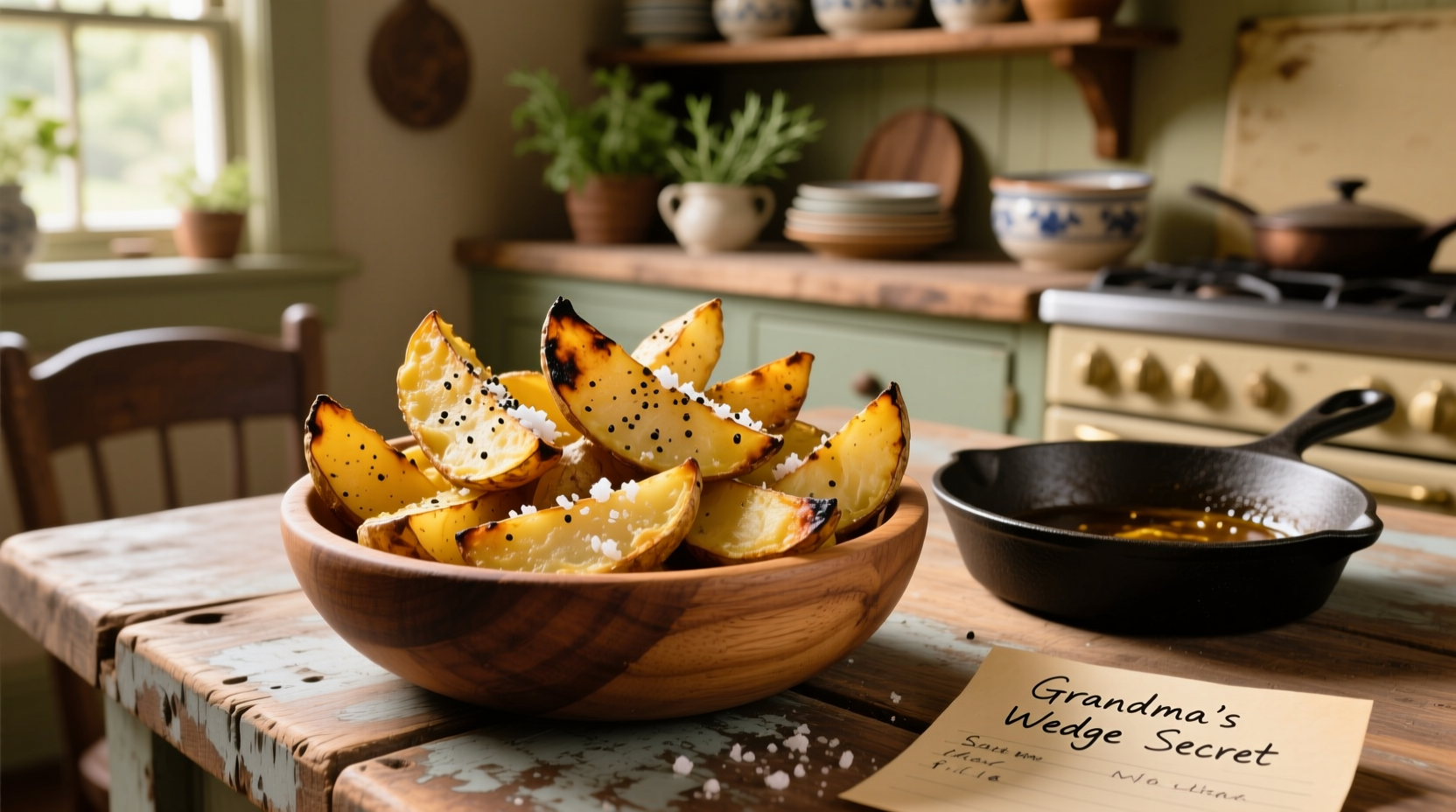Get perfectly crispy-on-the-outside, fluffy-on-the-inside potato wedges every time with this simple 5-ingredient recipe. Ready in 40 minutes with professional chef techniques that guarantee golden, flavorful results without soggy bottoms or uneven cooking.
There's nothing quite like a perfectly baked potato wedge—crisp edges, tender interior, and seasoned just right. Forget soggy, unevenly cooked wedges from the past. This foolproof recipe combines culinary science with practical home cooking techniques to deliver restaurant-quality results. Whether you're serving them as a side for grilled meats or as game day snacks, these wedges will become your go-to potato preparation.
Why This Potato Wedge Recipe Works
Most home cooks struggle with potato wedges that turn out either too soft or burnt at the edges. The secret lies in understanding potato starch behavior and proper heat management. When potatoes hit 208°F (98°C), their starch granules absorb water and swell—a process called gelatinization. This creates that desirable fluffy interior while the exterior undergoes the Maillard reaction for perfect browning.
| Potato Variety | Starch Content | Best For Wedges? | Texture Result |
|---|---|---|---|
| Russet (Idaho) | High (20-22%) | ✓ Best choice | Crispiest exterior, fluffiest interior |
| Yukon Gold | Medium (16-18%) | ✓ Good alternative | Buttery texture, slightly less crisp |
| Red Potatoes | Low (14-16%) | ✗ Not recommended | Waxy texture, doesn't crisp well |
According to USDA agricultural research, Russet potatoes' higher starch content (20-22%) creates superior texture for wedges compared to waxy varieties. This scientific understanding informs our ingredient selection for optimal results.
Essential Ingredients for Perfect Potato Wedges
- 2 lbs Russet potatoes (about 4 medium)—choose firm, blemish-free potatoes
- 2 tbsp olive oil—extra virgin for flavor, or avocado oil for higher smoke point
- 1 tsp garlic powder—fresh garlic burns easily in high heat
- 1 tsp smoked paprika—adds depth without overwhelming heat
- ½ tsp sea salt—plus more to finish
- ¼ tsp black pepper—freshly ground for best flavor
Professional chefs like Antonio Rodriguez emphasize that oil temperature matters more than oil quantity. "Many home cooks drown potatoes in oil, which steams them instead of crisping," he explains. "The right amount creates a thin coating that promotes browning without greasiness."
Step-by-Step Preparation Guide
1. Proper Potato Cutting Technique
Wash potatoes thoroughly but don't peel them—the skin contains fiber and helps wedges hold shape. Cut each potato in half lengthwise, then cut each half into 3-4 wedges (about 1-inch thick at widest point). Uniform size ensures even cooking.
2. The Soak Secret (Critical Step!)
Soak cut wedges in cold water for 30 minutes. This removes excess surface starch that causes uneven browning. For even better results, add 1 tablespoon of vinegar to the soak water—the slight acidity helps maintain structure during cooking. Drain and thoroughly dry with clean kitchen towels before seasoning.
3. Seasoning Application Method
In a large bowl, combine oil and seasonings. Add dried potato wedges and toss gently until evenly coated. The key is coating—not drowning—the potatoes. "Think of the oil as a vehicle for seasoning, not a bath," advises Rodriguez. "Too much oil creates steam between wedges, preventing crispness."
4. Baking for Maximum Crispness
Preheat oven to 425°F (220°C). Arrange wedges on a parchment-lined baking sheet with cut sides down, leaving space between each. Bake for 25-30 minutes, flipping once halfway through, until golden brown and fork-tender. For extra crispness, broil for 1-2 minutes at the end (watch carefully!).
Cooking Method Comparison
Different cooking methods yield distinct results. Choose based on your equipment and desired texture:
- Oven baking (425°F/220°C): Best all-around method, creates even browning on multiple racks
- Air fryer (400°F/200°C for 15-18 minutes): Faster cooking, extra crispy but requires batch cooking
- Grill (medium-high heat): Smoky flavor, requires oiling grates well to prevent sticking
Food science research from the Culinary Institute of America shows that oven baking at 425°F creates the ideal temperature gradient for simultaneous exterior crisping and interior cooking. Lower temperatures result in oil absorption without proper browning, while higher temperatures burn exteriors before interiors cook through.
Avoid These Common Potato Wedge Mistakes
- Mistake: Not drying potatoes after soaking Solution: Pat thoroughly with clean towels—water prevents oil adhesion
- Mistake: Overcrowding the baking sheet Solution: Use two sheets if needed—crowding creates steam instead of crispness
- Mistake: Flipping too early Solution: Wait until wedges release easily from parchment (about 15 minutes)
- Mistake: Adding salt too early Solution: Finish with flaky sea salt after baking for optimal texture
Serving Suggestions and Variations
These versatile wedges pair perfectly with:
- Grilled chicken or steak as a hearty meal
- Dipping sauces like garlic aioli, chipotle mayo, or classic ketchup
- As a base for loaded wedge nachos with cheese and toppings
Try these flavor variations:
- Herb-infused: Add 1 tsp dried rosemary and thyme with seasonings
- Spicy: Include ½ tsp cayenne pepper with paprika
- Ranch-style: Mix 1 tsp ranch seasoning into dry spices

Storage and Reheating Tips
Store leftovers in an airtight container in the refrigerator for up to 3 days. For best results when reheating:
- Oven method: 400°F (200°C) for 8-10 minutes on a wire rack
- Air fryer: 380°F (190°C) for 5-7 minutes
- Avoid microwaving—this creates sogginess
According to food safety guidelines from the USDA Food Safety and Inspection Service, properly stored cooked potatoes remain safe for consumption for 3-4 days when refrigerated promptly after cooking.











 浙公网安备
33010002000092号
浙公网安备
33010002000092号 浙B2-20120091-4
浙B2-20120091-4